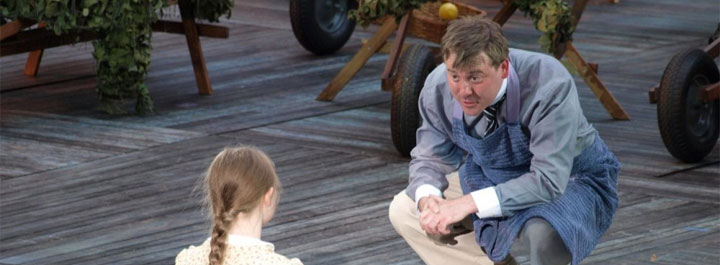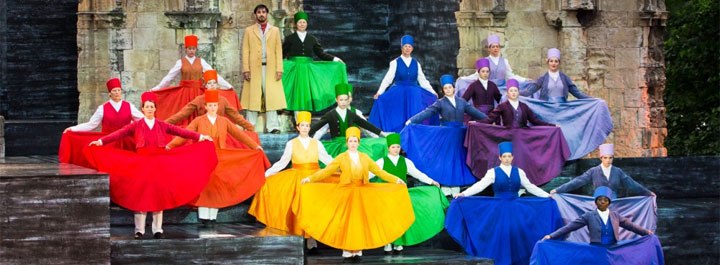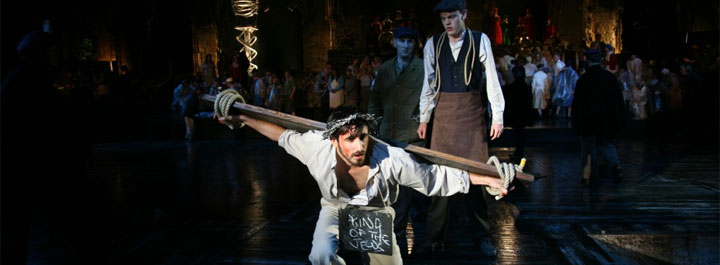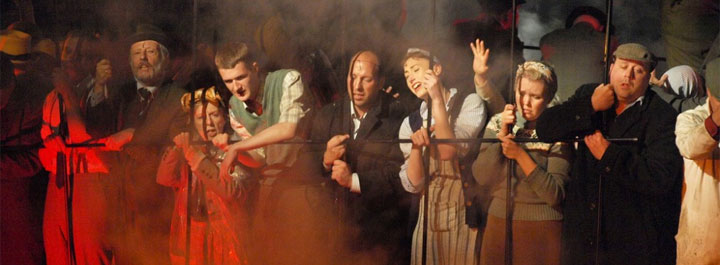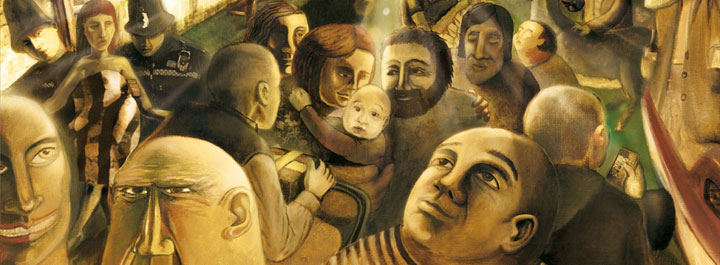Interview with... Liam Evans-Ford
Theatre producer Liam Evans-Ford has the challenge of staging the Mystery Plays in the shadow of the ruins of St Mary’s Abbey in York's Museum Gardens for the first time in nearly a quarter of a century.
Liam Evans-Ford smiles a lot for a man with the weight of eight centuries of history on his shoulders. As community producer of the 2012 York Mystery Plays, he has the task of restoring one of the city’s greatest dramatic spectacles to the location which many believe has seen the most effective of its modern incarnations. To describe his burden of responsibility as substantial is putting it mildly.
it’s always been a project that’s been professionally delivered with people from the city
Liam Evans-Ford
He is marshalling an army of 1500 enthusiastic volunteers ranging from amateur actors and stagehands to costumiers andphotographers, from front-of-house staff to musicians and choristers, as preparations gather pace for the open-air shows next month. Since their renaissance to coincide with the Festival of Britain in 1951, the Mystery Plays have always been a celebration of York’s social cohesiveness.
Two interchangeable casts each numbering 250 will help to ease the strain on the amateur actors of four weeks of nightly performances. They will be joined by professionals Ferdinand Kingsley, who plays God and Jesus Christ, and Graeme Hawley as Satan.
“There are a number of reasons why we have two casts,” Evans-Ford says. “First, it gives more people more opportunities to be involved, and it’s always been a project that’s been professionally delivered with people from the city.”
University staff and students are taking part and Evans-Ford says that one of his main objectives has been to involve the city’s employers, large and small, in the project.
By any measure it is a mammoth project – the stage area alone is bigger than any other in the UK. The entire floor area of York Theatre Royal’s stage and wings would fit into the Mystery Plays stage area four times over. The sophistication of outdoor events in 2012 means the erection of the auditorium in the Museum Gardens will consume a fraction of the time it once took. Evans-Ford says the outdoor location is less daunting to the non-theatregoer and will help to fulfil the mission to make the production as inclusive as possible.
Photo by Allan Harris
Writer Mike Kenny has reduced the 48 plays in the York Cycle to a narrative lasting around three hours. Evans-Ford says the result provides a new dimension to the traditional story for a more secular age.
“People have been telling this story for over 800 years, so our challenge is to tell the story anew and find something that appeals to people who have faith and to those who don’t. It will be an epic event to come and see,” he promises. Bringing the drama to life has been the job of Damian Cruden, who is artistic director at York Theatre Royal and Paul Burbridge, who is director of Riding Lights Theatre Company.
Evans-Ford has no concerns about the capacity of his cast to rise to the challenge, even though he acknowledges some of them will never have been on stage before.
If all the tickets are sold for the 28 performances, the Mystery Plays will be seen by a total of 38,000 people. But it is no longer simply the performances that will be available for the public to see. In this digital age, every aspect of the entire production has been documented assiduously.
Evans-Ford says: “What the photography group is doing is covering every single rehearsal, every single costume-making session, script meetings and so on. Digitally, photographically and cinematically we can record a lot more so it means we have something quite substantial to add to the archive. With a project like this, you are sitting within a massive slice of history that’s been going for 800 years and that, hopefully, will be with us for another 800 years.”
Further information
- York Mystery Plays 2012
- Flickr gallery
- This article features in the July/August issue of the University Magazine


